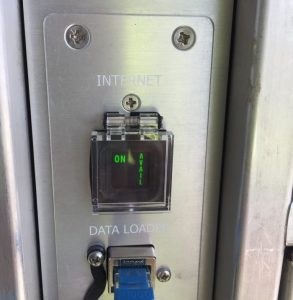
Qantas has delayed start of its internet wi-fi service due to what the airline says are “stability issues”.
The airline said recently it had planned to turn on internet wi-fi on one of its Boeing 737-800s, VH-XZB, by the end of this week.
However, Qantas said in a statement on March 25 that had now been postponed, citing circumstances beyond its control.
“We were preparing to open it up to media and customers this week as we continue our fine-tuning over the next few months, but some stability issues have emerged that we need to fix before customers can use it,” Qantas said.
“We’re working with nbn and ViaSat to fix these issues very soon.”
Qantas has been testing the systems on board VH-XZB since the aircraft had a satellite antenna, multiple wireless access points in the cabin and other hardware installed in November 2016.
It had planned to turn on internet wi-fi for passengers in early 2017.
Despite the delay, Qantas said the timeline for rest of the domestic Boeing 737-800 and Airbus A330 fleet to feature internet wi-fi was unchanged.

“We’ve been testing in-flight wi-fi for several weeks and the performance has been strong,” Qantas said.
“We remain on-track for a broader rollout to the Qantas domestic fleet from mid-2017.”
Qantas announced in February 2016 plans to equip its domestic fleet of 737-800s and A330s with internet wi-fi, with connectivity to be provided by ViaSat’s global satellite network and the National Broadband Network’s Sky Muster satellites.
It planned to offer the service free of charge. The airline announced previously passengers would be able to stream television programs from Foxtel for free both during the flight and for the following three days.
Meanwhile, Netflix and Spotify would offer a 30-day free trial to passengers who subscribe to the service, while Stan will offer a 90-day trial.
Qantas chief executive Alan Joyce has said previously the satellites, which use the high capacity Ka-band, would deliver internet speeds 10 times faster than conventional on-board wi-fi.
Tests on board VH-XZB showed “typical download speeds” of between seven and 12 megabits per second to each connected device, Qantas said in February.
The airline was also considering offering wi-fi on regional and international aircraft.
Meanwhile, Air New Zealand announced its October its international and domestic jet fleet would be progressively equipped with wi-fi from 2017 utilising the Inmarsat new global GX satellite constellation. Trials were scheduled for the second half of 2017 on a new Airbus A321neo and refitted Boeing 777-300ER.
And Virgin Australia said in July 2016 it would offer internet connectivity on its 737, 777-300ER and A330 fleet from mid-2017. However, the carrier was yet to announce details about the technology it would use, its pricing model and any potential partners for the service.
Virgin chief executive John Borghetti said in February details about the airline’s internet wi-fi offering would be made shortly.










